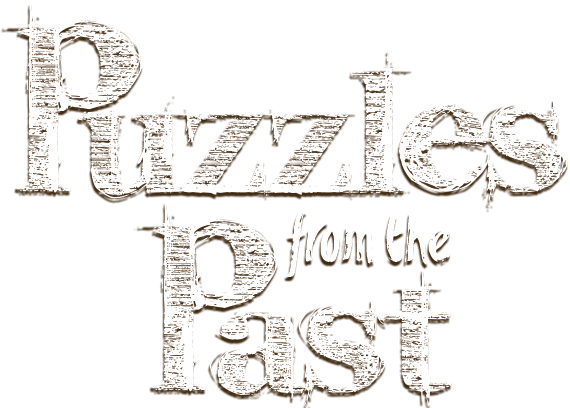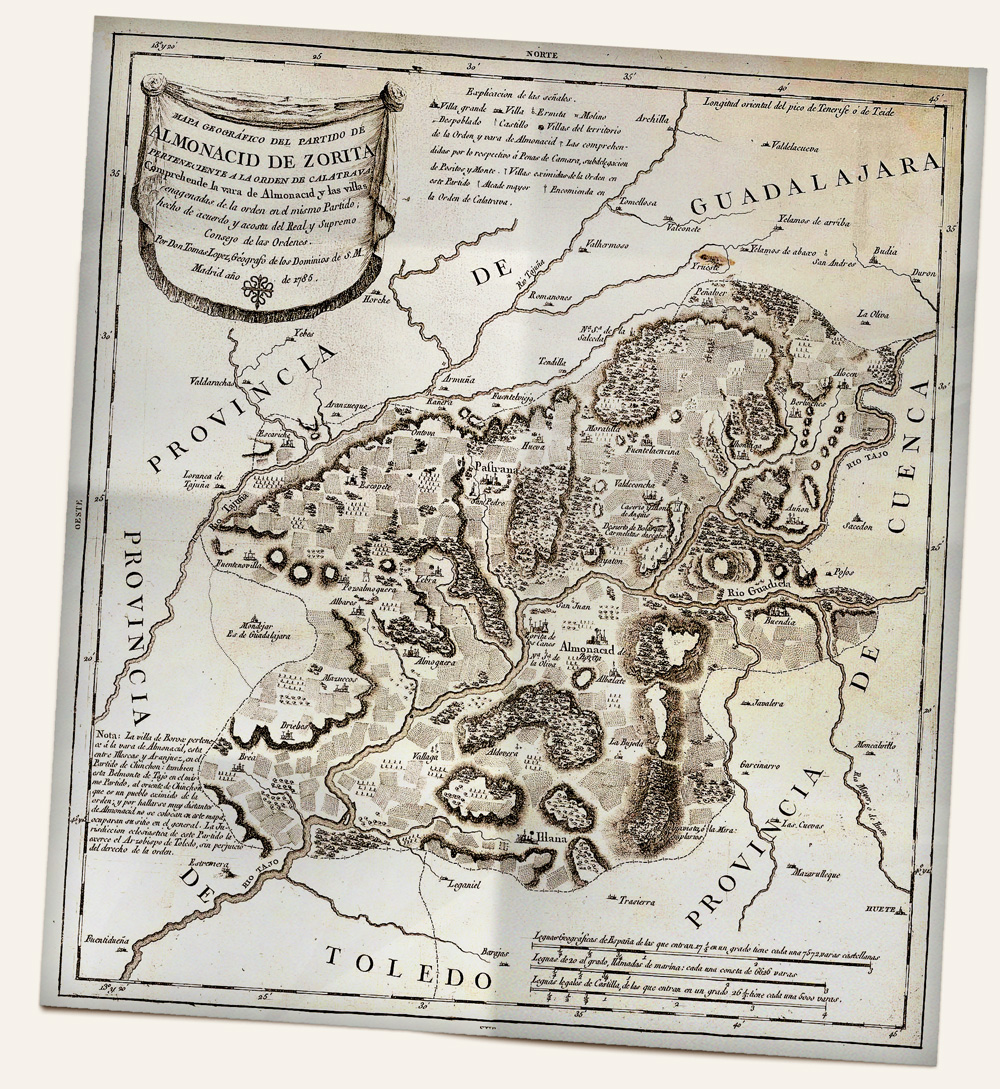The Mission
An investor has expressed interest in renovating the castle and creating a historical destination that includes developing space to host events. It would be a huge boon to the town of Zorita. But with the recent issues, a pall of uncertainty has fallen over the project.
An agent recently contacted the League. Hired by the prospective buyer, his aim is to put the rumors to rest. But his timeline is short and he desperately requires assistance to weed through a mass of reports, interviews, and rumors from the site. He’s specifically asked for you. Are you available to help?
Zorita Castle Site Overview
Roughly an hour and a half car ride to the east of Madrid stands the medieval citadel of Zorita Castle. Sitting prominently atop a plateau, the castle towers over the idyllic village of Zorita de los Canes.
Zorita Castle is a historical treasure. Built to protect one of three bridges spanning the Tagus River, the castle has reportedly never been taken by an invading army.
Fig. 1 — A2 UE110 Enrique III-IV Blanca Burgos Coin
Constructed originally in the beginning of the 9th century by Muslims residing near the ancient Visigothic city of Recopolis, the castle guards the crossing of the Tagus River connecting Toledo and Zaragoza; an important strategic location through which all commerce between Muslim and Christian Spain passes. Sitting on the frontier between these civilizations, the castle changes hands several times over the ensuing years.
1085 - The castle is passed to Alfonso VI, King of Castilla & Leon, for assistance granted to the Moor King of Toledo whose daughter, Zaida, he marries.
1099 - Alvar Fanez, a relative of the famed Spanish knight, El Cid, serves as governor of the castle.
1124 – New wars with the Berber Kingdoms of North Africa bring instability to the region. The castle is reclaimed by Alfonso VII with assistance from Jews & Mozarabs (Christians living in Arab lands). The castle will never again be in Muslim hands.
1174 - Berber Kingdoms of Africa create insecurity in the region. Alfonso VII donates the castle to the Order of Calatrava to defend it from the Moors. The Order of Calatrava is the first religious and military order created in the Peninsula to fight the Arabs.
1195 to 1212 - The castle becomes the capital of the Order of Calatrava when its headquarters, Calatrava la Vieja, is conquered by the Arabs. In 1212, the Christians defeat the Arabs in the Battle of Navas de Tolosa and the conquest of Andalusia starts. The capital of the Order is reestablished in Calatrava la Nueva.
13th to 14th Centuries - With the Muslim threat diminished, Zorita becomes the center of a prosperous region. With the peace, military fortresses lose importance in favor of nearby towns such as Almonacid and Pastrana. It is the beginning of Zorita’s decline.
1565 - The abandoned castle is sold by Philip II to the Princess of Eboli. From this point on, the castle passes through subsequent generations of nobles who largely neglect its upkeep.
1994 - The last owner of the castle is unable to pay for the upkeep of the castle and symbolically sells it to the Zorita Town Hall for an old coin found at the castle.
2014 – Excavations of the castle are launched by American Foreign Academic Research (AFAR) and ArchaeoSpain. The first area of focus is the church of San Benito, the best preserved structure at the site. The Knights of the Order of Calatrava built the church at the end of the 12th century when the castle became the Order's headquarters. Documents mention a cemetery, but the only material evidence is a long stone slab, possibly a burial cover. When cleaning the stone, a Medieval Tic-Tac-Toe game is uncovered, a game the Arabs copied from the Romans who previously copied it from the Ancient Persians.
Site
Zorita Castle
Civilization
Moors & Christian Knights
Period
Medieval
Adventure Duration
4-5 weeks
About this Adventure
The Zorita adventure spans four to five weeks. Over the course of the ongoing excavation, packages will be delivered to you; each package includes an assortment of clues of varied composition. Your role is to solve the mystery by piecing together the information in official notices, police reports, personal journals, pictures, relics, paranormal investigations, and a host of other materials. But the path to the truth never proceeds in a straightforward manner…
During the course of this adventure, you will receive reproductions or replicas of significant items connected to the site crafted by skilled artisans.
$185 + Shipping
Ordering Available Soon.
Shipping costs will be added based upon the adventure purchased and the delivery location. Our goal is not only to entertain, but also to educate. With this in mind, each adventure is based upon a real site and the history is interwoven into the mystery. There is a dash of fiction to ensure the story ties together – and also because there are always gaps in our understanding of a specific location or item. With the final delivery of each adventure, a reveal is included. This reveal identifies the line between fact and fiction.
Artifacts Recovered at Zorita
Zorita Archaeologist
Archaeologist Interview – Catalina Urquijo
Archaeospain, Site Director - Zorita Castle
What is your focus from an archaeological perspective?
Since I began studying archaeology, the question that intrigued me was - what can we really learn about a society from the material evidence we uncover during an excavation? What do the thousands of pieces of broken pots that we carefully clean, draw, and classify tell us about a society? So I focused on ethno-archaeology – seeking answers to what ceramics tell us about the culture and daily life of our predecessors. I want to make those shards talk, to decipher all they have to tell about the people who made them, traded with them, cooked in them, fixed them and sometimes, were buried in them. Life is unpredictable and although I started focusing on the Iron Age, I‘ve had the opportunity to excavate many sites in Spain from Calcolithic to Medieval times. But my greatest passion has been to share my experiences with those interested in archaeology. In 2018 my husband and I celebrated the 20th anniversary of our first archaeology field school.
What professional associations and universities are you affiliated with?
I studied at the Universidad Complutense in Madrid. After several years working as professional archaeologists, my husband and I started the Official Association of Holders of Doctoral and Bachelor's Degrees in Castilla la Mancha, the region in Spain where we live and work. Several years thereafter, we partnered with other archaeologists and launched the Association of archaeologists of Castilla la Mancha - where I currently serve as the director. Additionally, I taught archaeology at Nebrija University in Madrid and at the Center for Studies Alvaro Duran Art and Enterprise.
When did you know you wanted to become an archaeologist? what was the driver for your interest in archaeology?
I grew up surrounded by art books, National Geographic, and other travel magazines. My father loved travelling and used to return home with maps, pictures and stories that fascinated me. He opened a shop in Madrid focused on traditional ceramics when I was seven and took me with him all over Spain on many amazing trips. I always had a hunger for adventure, for discovery, for travelling, and for meeting new people and discovering their cultures and traditions. Not knowing any archaeologists or understanding their work, I was fascinated when I watched a documentary on Petra when I was 14 years old. From then on, I knew that investigating and learning about the past was my career.
What is the most amazing find you’ve ever uncovered on an archaeological site?
It is very difficult for me to choose only one, but I know what I love the most is the unexpected discoveries that make you wonder about the story behind them - like the fifteen pounds of bronze axes and other tools that were intentionally hidden under the floor of a Bronze age hut near Toledo (Spain) or the two skeletons, man and woman that were hugging each other inside a Calcolithic hole with a third person lying alone by their feet.
What historical mystery do you wish you could solve?
Archaeologists find objects - the physical remnants of prior cultures. These objects had a meaning in their day that is often elusive to our modern minds. I wish I could discern the real significance of things in distant times such as Carnac stones in France, the Taulas in Menorca or Stonehenge in UK.
What mystery are you involved with at Puzzles From The Past?
Zorita Castle, the Medieval castle that we are currently investigating and excavating as site directors.
Why did you elect to contribute to Puzzles From The Past? WHAT ABOUT THE CONCEPT WAS ENTICING TO YOU?
I loved everything about the idea when I first heard about it. It involves archaeology and history. It requires research, but in a fun way by deciphering each clue. For me it is also a great opportunity to dig deeper into many fascinating aspects of the ongoing investigations in which we are currently working.
What do you hope our guests get out of their Puzzles From The Past experience?
Being involved in an ongoing investigation is always enriching and fascinating. I hope that they experience the fun and excitement of solving a mystery while learning about real archaeological sites, cultures and curiosities of our collective past.
Preserving History for Future Generations
With the purchase of every PFTP Adventure, PFTP makes a contribution to preserve the specific archaeological site in order to ensure these historically significant locations can be enjoyed and used as educational resources for ourselves and future generations.



















